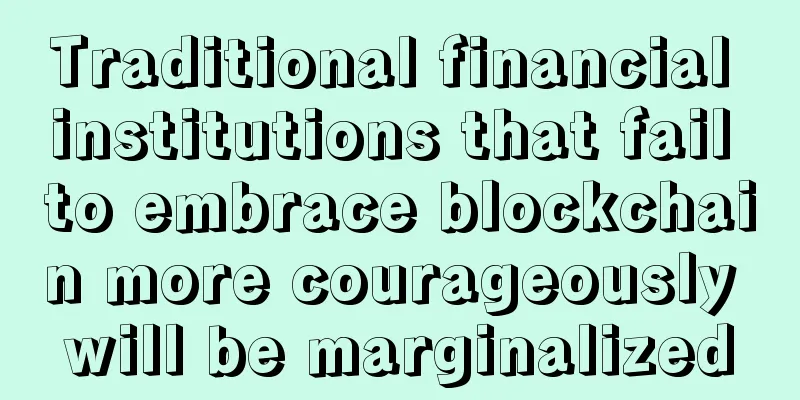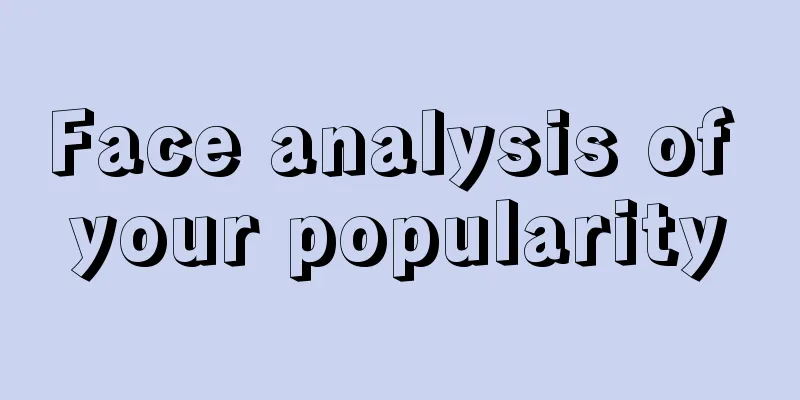Traditional financial institutions that fail to embrace blockchain more courageously will be marginalized

|
In this article, Bilingham analyzes the challenges of developing a long-term blockchain framework in the financial services sector. He also calls on the financial industry to recognize the potential of blockchain technology and take bold action. There have been numerous blockchain commitments in the financial sector since the beginning of 2016. While most of the commitments show encouraging momentum, clear application strategies are elusive. If every bank, exchange, infrastructure provider and clearing house put their internal working groups together, all would agree on one thing: namely, blockchain technology is not a panacea for financial markets. However, without defining what blockchain technology is not, it seems that few people agree on what blockchain technology actually is. In the past 14 months, the financial industry has invested $1 billion in blockchain consortia, pilot projects, and companies and others have written consensus documents discussing any number of blockchain applications. This activity shows that industry interest in the technology is high, but it is an atypical example of how an innovative technology usually enters the market. We would prefer that the financial industry abandon consensus-building practices and instead demonstrate bolder, unilateral action in pursuit of relative competitiveness. In addition, if traditional financial institutions are slow to act, we would like blockchain startups to build new banks. starting point At present, none of the above scenarios have occurred, and a pessimist might say that the focus on partnerships shows that the institutions involved are protecting their bets against losses. An optimist would argue that these institutions can only succeed if they form partnerships. However, this collaborative approach also has its advantages. Blockchain is not simply a piece of software installed on a computer, but the foundation of a solid peer-to-peer network. At Markit, we take building a successful network very seriously and we have invested the necessary time and effort. At least one startup has already obtained a banking license. But the question remains: Why blockchain? How did we move from a conversation about digital currencies to one about the revolutionary subject of financial product innovation, transactions, contract creation, etc.? Although a bit outdated now, all of this stems from some key concepts in the Bitcoin protocol. Specifically, it means: Bitcoin transactions can be settled in minutes — minimal settlement delays; 2. Bitcoin participants and recipients use a distributed ledger — there is no central data store; As the financial industry struggles to come to terms with the post-financial crisis financial framework and the systemic costs it incurs, the Bitcoin protocol offers a tempting solution. Settlements, reconciliations, and the security mechanisms around these processes, all of which could theoretically be put on the blockchain, incur a lot of costs for financial institutions. The second scene of the industry Meanwhile, digital currency and distributed ledger startups had to reinvent themselves in 2014 when the price of bitcoin fell. Realizing that capital market interest was still in its infancy, capital markets helped these companies survive by moving away from digital currencies and turning to concepts such as: enterprise blockchains, colored coins, meta coins, side chains, smart contracts, etc. The combination of cost-sensitive financial firms and revenue-hungry technology companies delivers a new paradigm for financial operations, but their geometry will require a long-term framework to achieve the desired heights. However, a series of wrong choices by the financial industry have led the development of blockchain to go astray. These wrong choices include: Is it "Bitcoin" or "blockchain"? Should blockchain be "public" or "private?" Is this technology the end of banking or is it just a database? " These issues prevent us from exploring the true subtleties of blockchain technology. Calling for courage If blockchain is going to play a revolutionary role in financial services, 2016 is the year for large companies to agree or disagree with its status and find their own path forward, unafraid of others following. Blockchain technology presents a new model for the architecture of the global financial system. Because of this, no matter how good the initial intentions are, consensus building often leads to attention being paid to the least common variables, blurring our understanding of the big picture. Mark Thompson, CEO of the New York Times Company, explained his views on the new technology blockchain at the South and Southwest Conference, saying: “You can’t expect others to jump off the cliff, you have to jump first… We have to be braver and smarter than our competitors. Don’t bet blindly when you are not sure. But we can’t be complacent. We know where complacency will lead us, and we have to be brave.” The financial industry must adopt the same mentality as blockchain. We can start by launching cost-cutting projects to digitize our assets and contracts, but we should also understand the potential of blockchain, which can transform the management of collateral and securitize a large number of financial products. These are new market opportunities, but only truly visionary people can seize these opportunities. Reprinted from: Pencil |
<<: Will blockchain plus supply chain produce a powerful effect like the Big Bang?
>>: Bitcoin, the undervalued currency, fully orders Tesla Model 3
Recommend
Bitmain releases Antminer S7 delayed delivery compensation announcement
On October 15, Bitmain announced a compensation p...
What kind of husband is the most incompetent?
What kind of man can a woman marry to be happy? O...
Are women with moles on the noses mean?
Mean people are generally afraid that their resou...
Blythe Masters: Blockchain commercial applications have reached a turning point
Blythe Masters, the former head of JPMorgan Chase...
Today's Recommendation | An analysis of three trends in the development of exchanges in 2019
As the crypto-asset market enters a deep bear mar...
People with these facial features are destined to be rich and have broad foreheads
Having a lot of wealth and money is something tha...
List of closed exchanges and mining pools, continuously updated
Exchanges name Last shutdown time Huobi Coin-to-c...
Is it good for people with moles on their thumbs to have good luck? Is it a destiny of wealth and honor?
As one of the traditional physiognomy techniques, ...
What will be the fortune of people with different ears?
Everyone's ears have their own characteristic...
How do the different types of treacherous faces affect marriage?
There are marks on the chin People with scars on ...
Industry chain insiders: TSMC has received Bitmain's 5nm chip order and is expected to start production in the third quarter
On May 6, according to foreign media reports, the...
Facial features of people who lack empathy
Some people have a compassionate heart. They cann...
F2pool BFC (Bitfree Cash) Mining Tutorial
Bitcoin Free Cash (BFC for short) is a new crypto...
What determines your appearance?
What determines your appearance? The study of hum...
Flow Traders has successfully registered with the Dutch Central Bank (DNB) -
Flow Traders NV (“Flow Traders”) announced that i...









